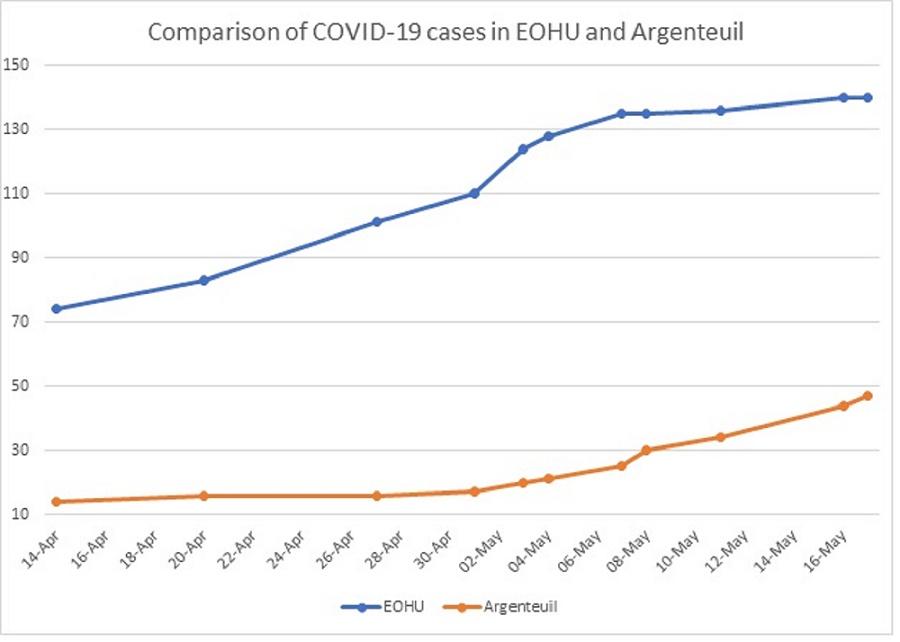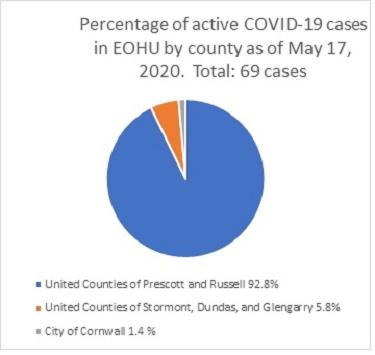Statistics have been a major part of the news surrounding the COVID-19 crisis. Each day, The Review has been publishing daily updates online which include the daily number of confirmed cases in the territory of the Eastern Ontario Health Unit and the MRC d’Argenteuil in Québec.
The stark contrast in the number of confirmed COVID-19 case totals between Ontario and Québec has been significant since the beginning of the pandemic. As of May 17 in Ontario (a population of 14.6 million), had 22,653 confirmed cases and Québec, which has a population of 8.5 million, had 42,920 confirmed cases. The high number of cases in Québec has created anxiety among residents of Eastern Ontario, and social media posts have reflected concern about the high rate of infection in Québec affecting Ontario. When authorities in Québec initiated random check-points on the Long Sault Bridge (the Ontario-Québec border), to shut down non-essential travel from Ontario into Québec, while Québec residents could enter Ontario freely, many questioned the one-way check-points.
However, there have been fewer confirmed cases of COVID-19 in two neighbouring jurisdictions in Québec than there have been in the United Counties of Prescott and Russell (UCPR). The UCPR has had the highest number of COVID-19 cases within the jurisdiction of the Eastern Ontario Health Unit (EOHU) since the pandemic began A graph of data from the case statistics presented in The Review’s daily updates over an approximately four-week period shows a consistent gulf in numbers between the UCPR and the neighbouring MRC d’Argenteuil.
EOHU and Argenteuil case numbers as of May 17, 2020

Data: EOHU, CISSS des Laurentides.
Not only have the EOHU and UCPR had more confirmed cases of COVID-19 , the UCPR has consistently had the strong majority of confirmed cases within the EOHU’s territory compared to the United Counties of Stormont, Dundas, and Glengarry, and the City of Cornwall, which is not politically part of any county.
EOHU COVID-19 cases by county/city jurisdiction

Data: Eastern Ontario Health Unit.
It’s geography’s fault
So, why has the UCPR consistently had higher case numbers than neighbouring counties in Ontario and Québec? The answer is basically the old real estate cliché, location, location, location. EOHU Medical Officer of Health Dr. Paul Roumeliotis has said in his daily briefings throughout the pandemic that COVID-19 cases have been concentrated in large cities due to the population density. He has said that the higher number of cases in the UCPR are because it borders on Ottawa and so many UCPR residents travel back and forth to Ottawa for work and other business.
COVID-19 has been especially harsh in long-term care facilities. As of May 18, all 10 COVID-19 deaths in the UCPR have been in a long-term care facility and there were three active outbreaks at long-term care facilities within the EOHU’s jurisdiction. However, as of that same day, there was only one outbreak at a long-term care facility in Argenteuil.


